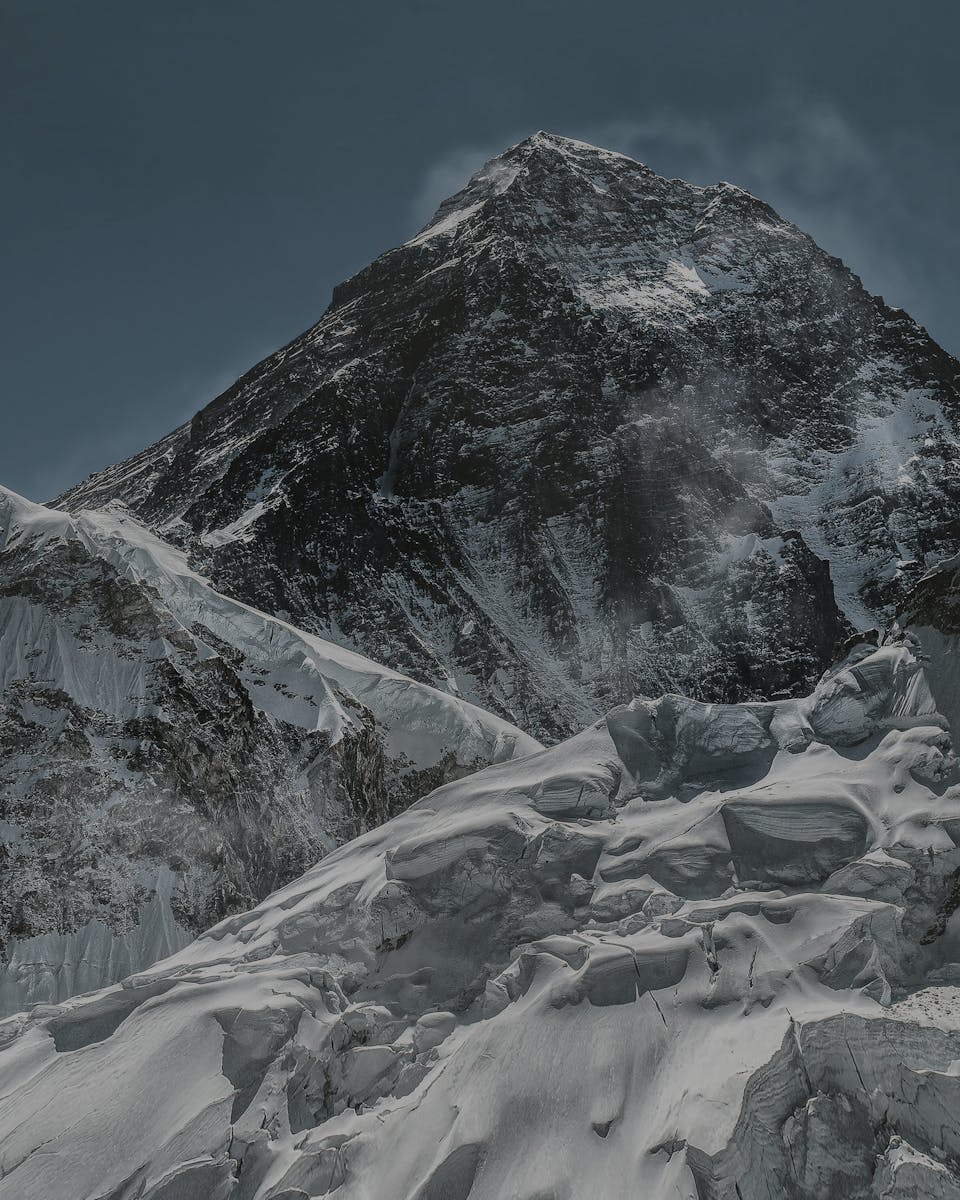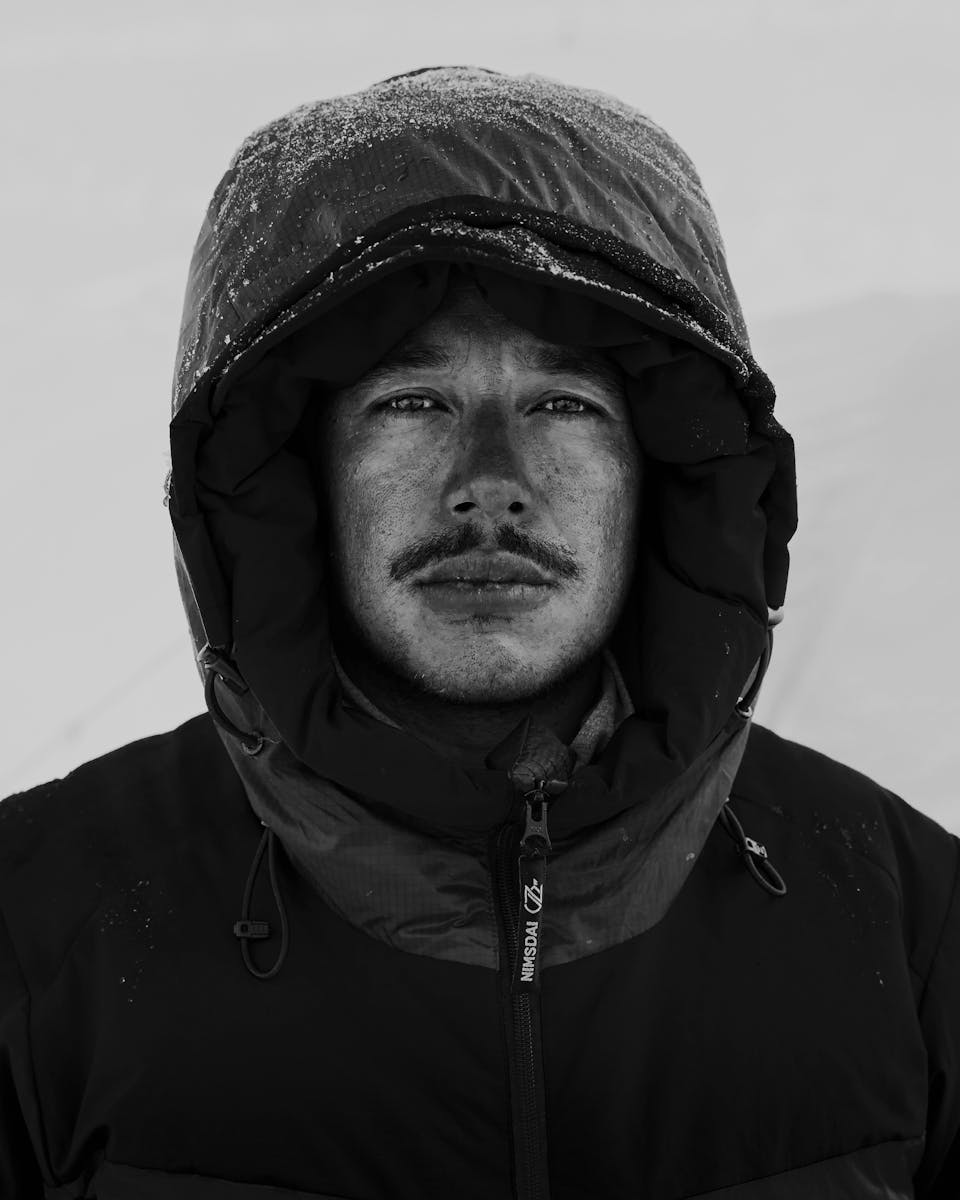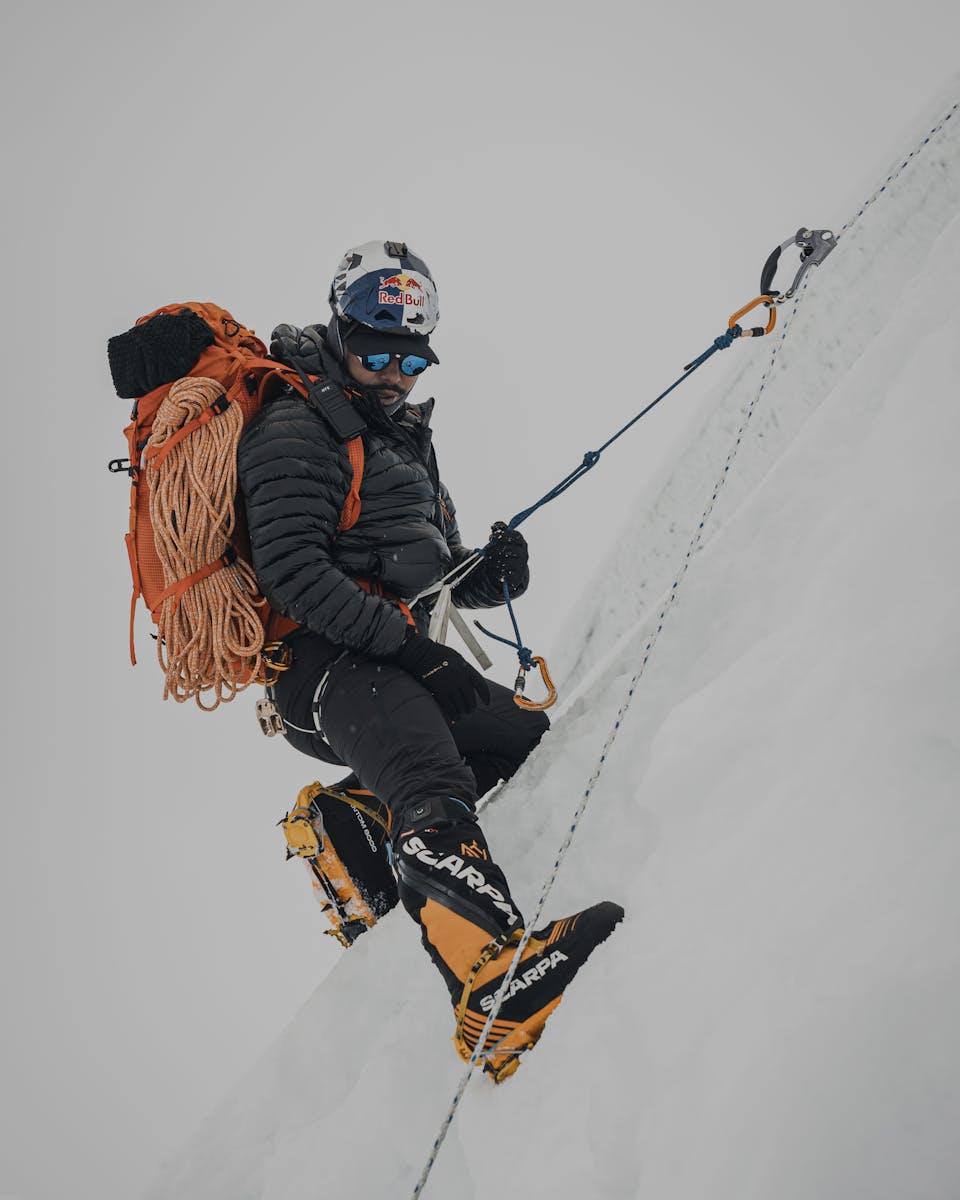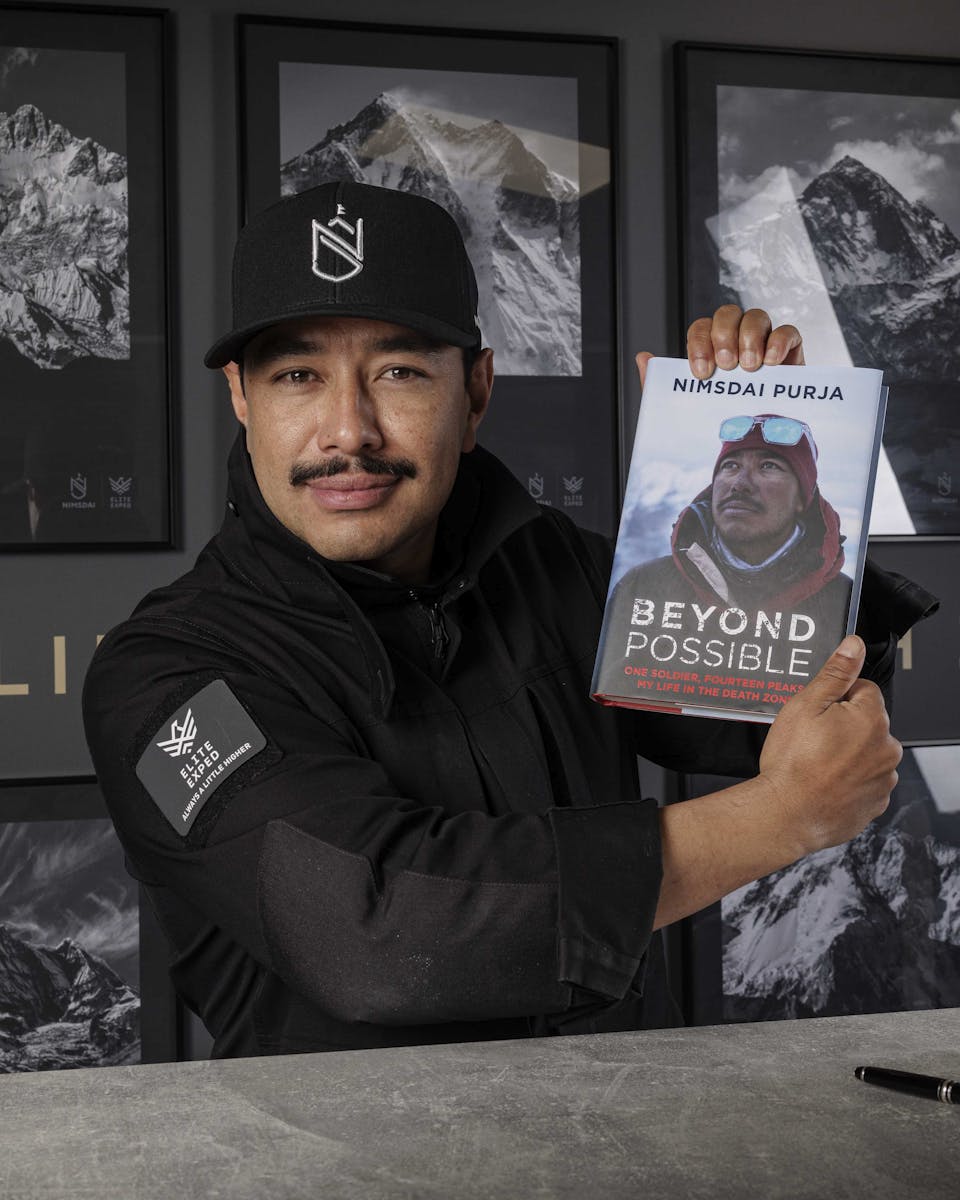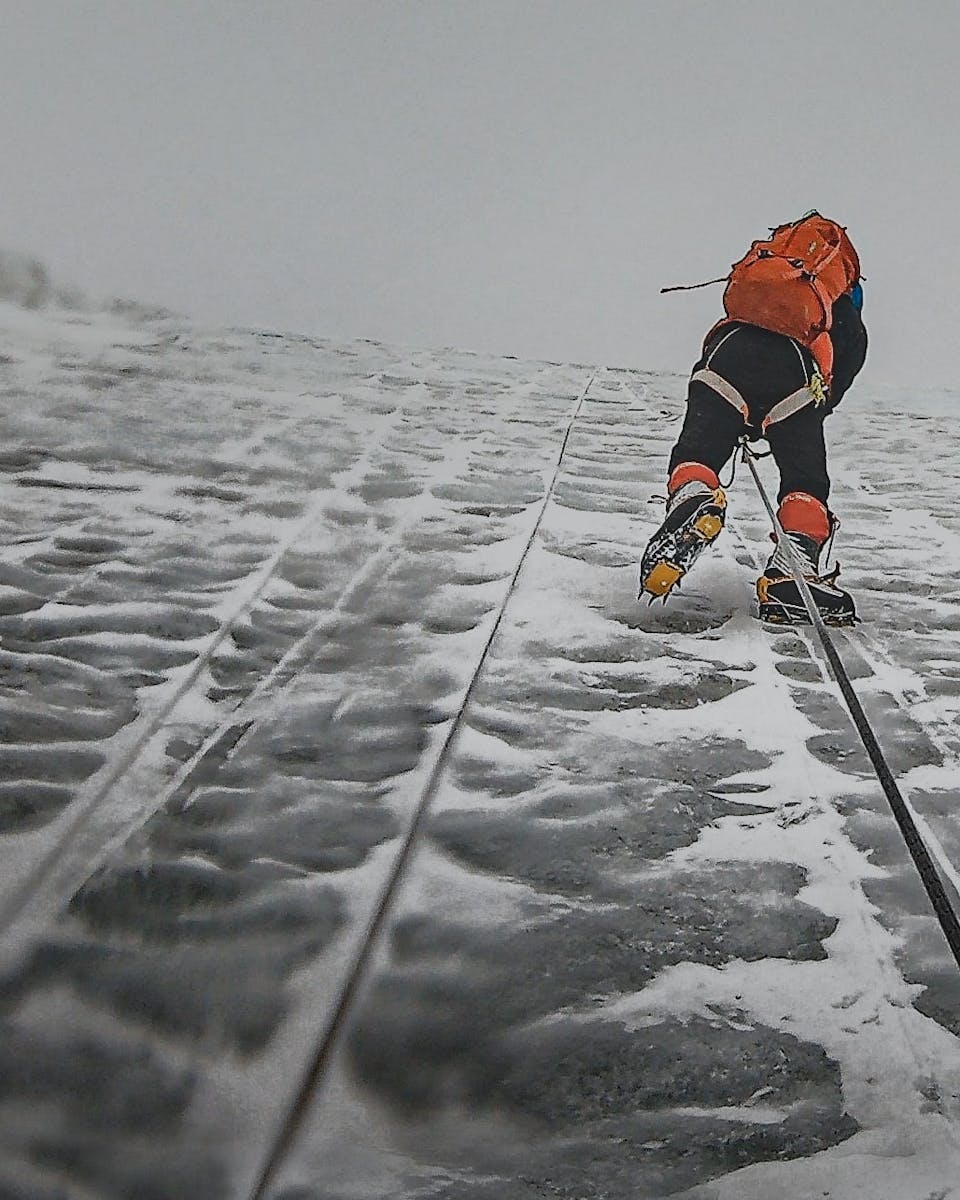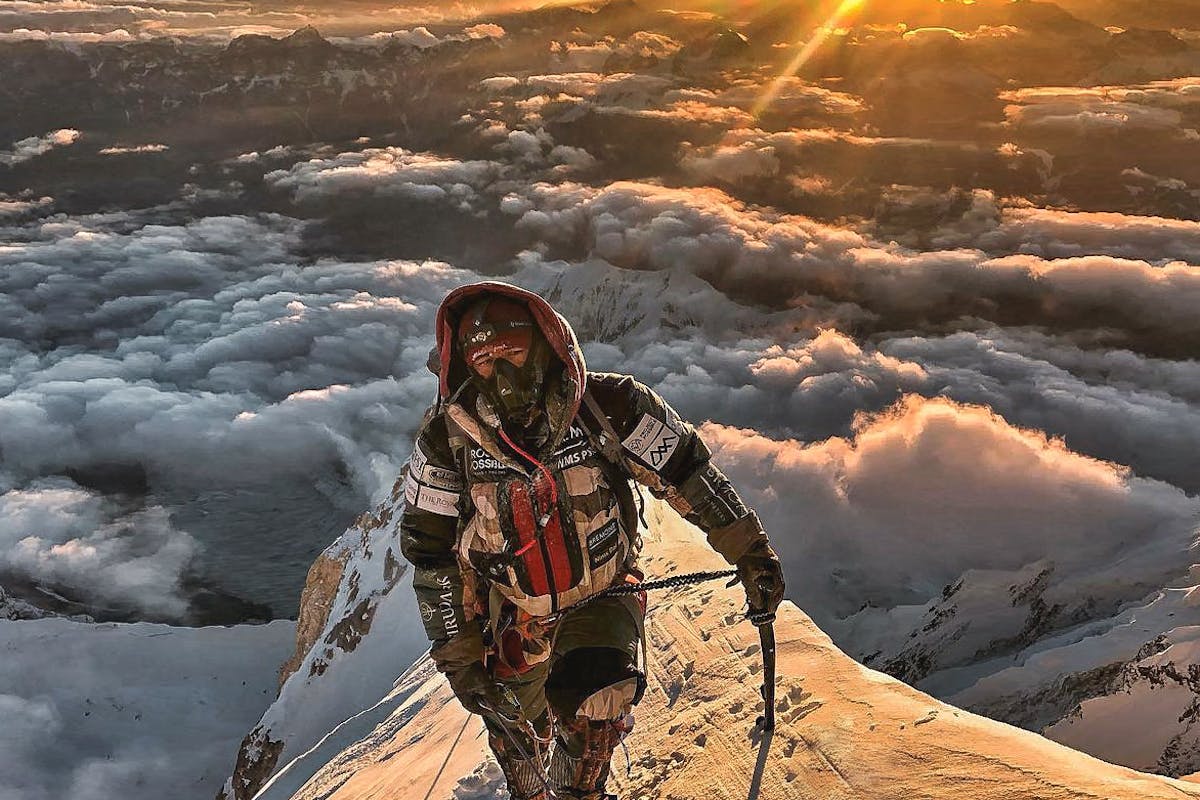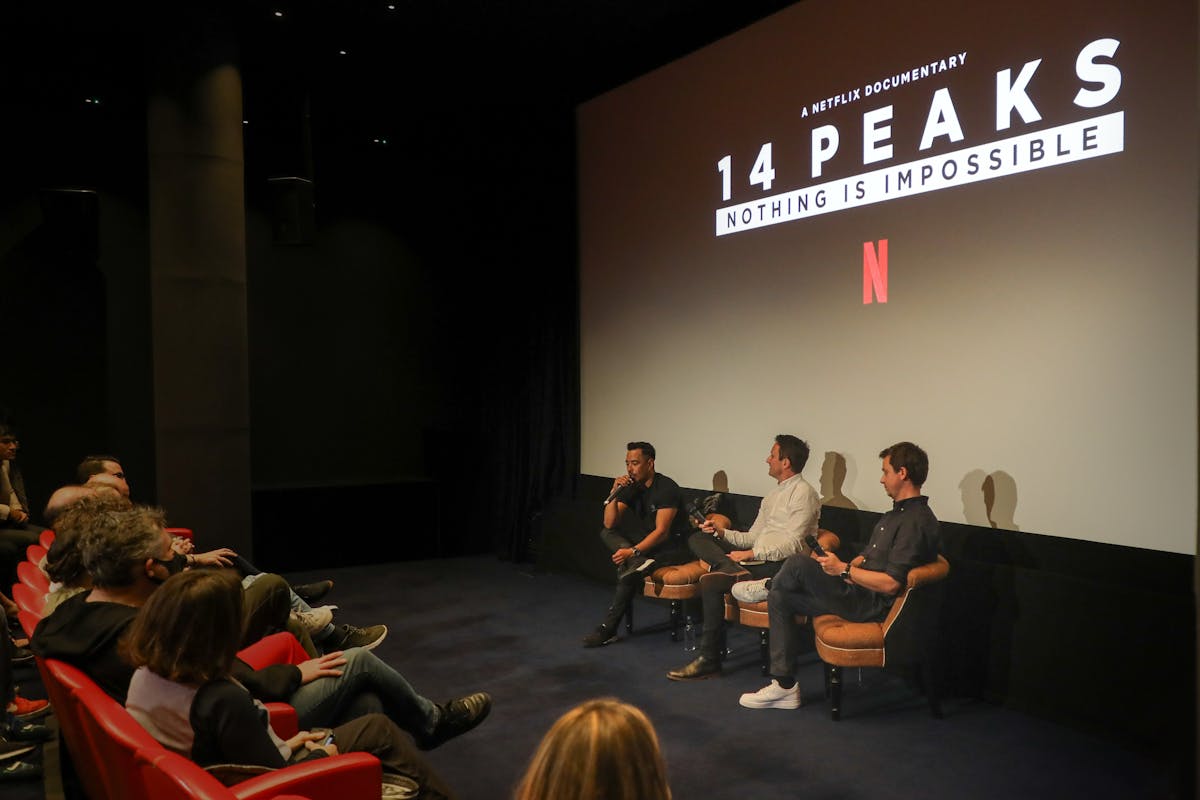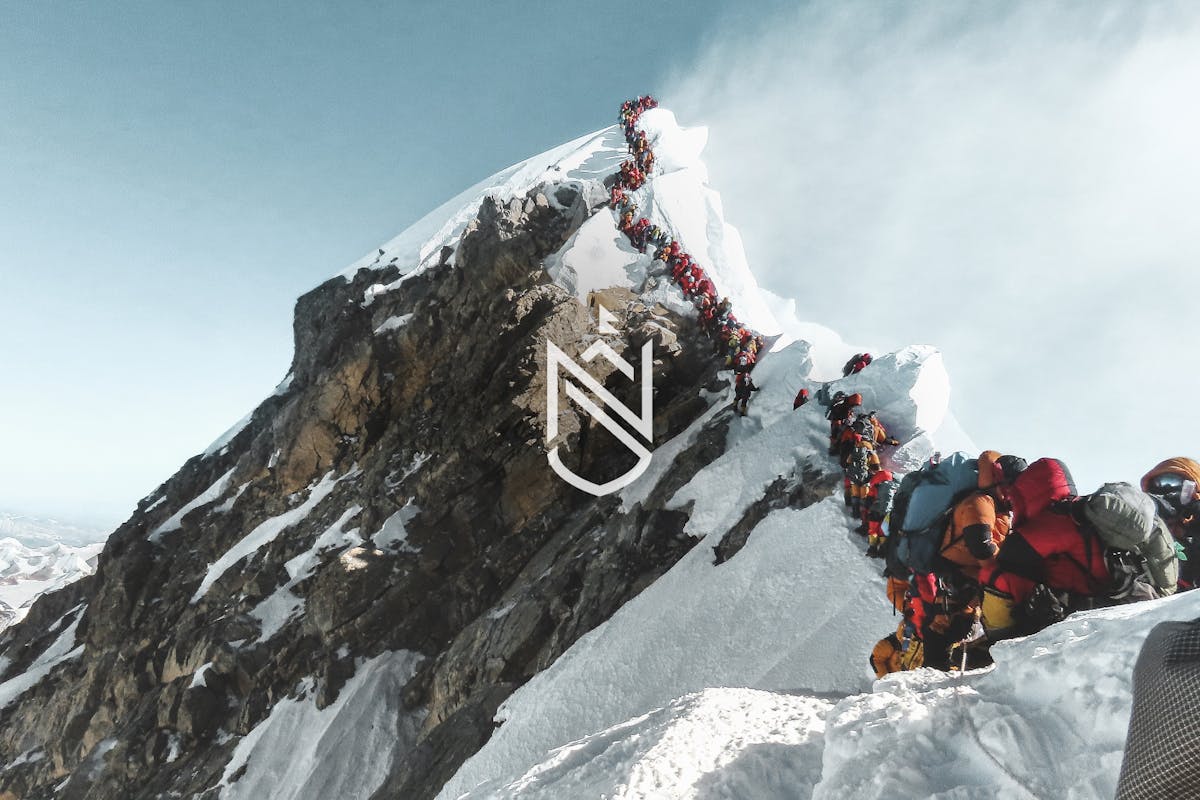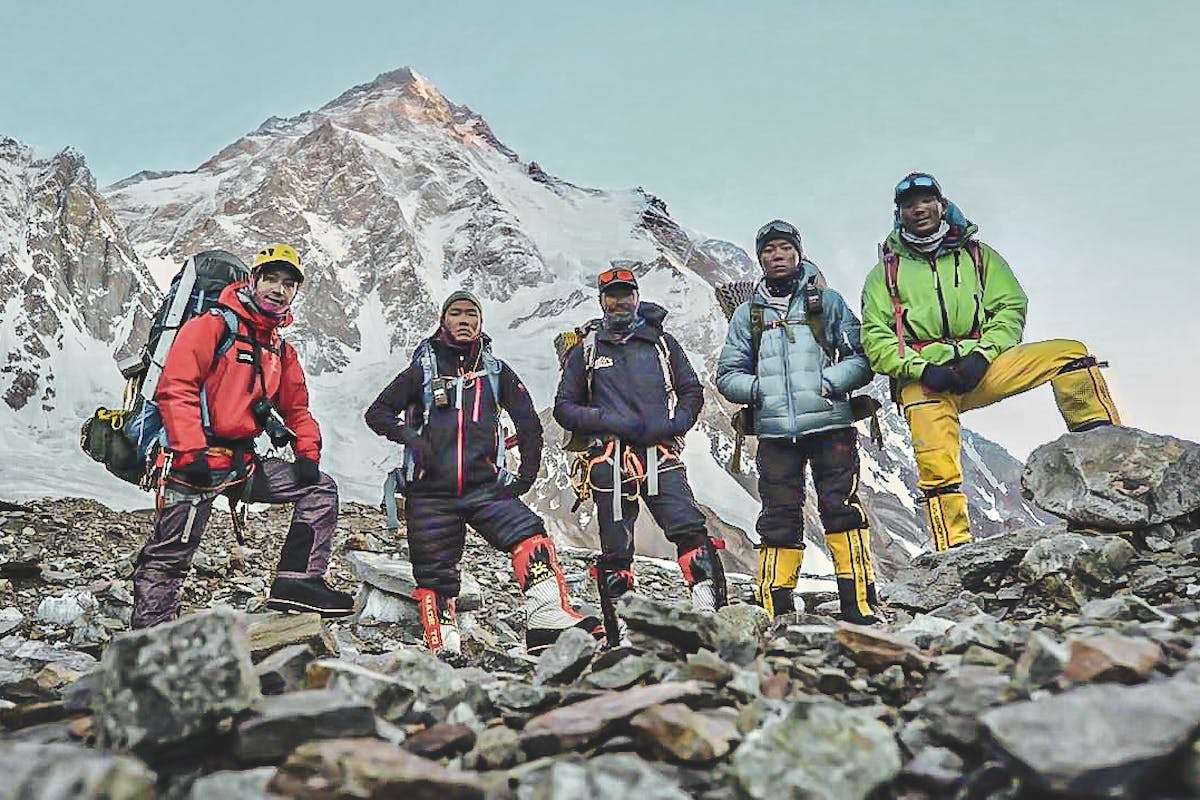“On Stage Two – which included Nanga Parbat and G1 and G2- we had a bit more money and sponsorship. I didn’t however have the money to fly Sagar and Alit to base camp and there had been some incidents of climbers being killed, so I couldn’t risk their lives especially when they were not climbers (though my perspective on Pakistan changed after I went there myself.) So, we managed the filming as a team after Nanga Parbat. G1 and G2 were filmed by us with the drone, our handheld camera, and an old video camera.
“For K2 we had a bit more money, so I was able to pay for a professional cameraman to come up and film K2 base camp, and after that to film the whole of Manaslu . I was still guiding when we were climbing Manaslu because we needed the money to keep going on 14/7. And to fit in the climbing window for 14/7, I had to take a break from guiding on Manaslu to go to Tibet to climb Cho Oyo, which I did in a week – filming as much as I could on a small portable camera. Then I came back to Manaslu, but Shishapangma was a different game.
“The biggest thing I found with it was because when you’re the lead character in a film, I had to be on camera, so I had to ask Mingma David to film me. I’m not naturally the sort of person to love being in front of a camera, so it felt awkward. But I knew I had to do it to show the world and inspire everyone to know that nothing is impossible. The things you see in the film, especially the filming with my mum during her hospital admission was really tough, but that film had to capture the multiple layers of emotions I was dealing with. It was a tough job, but it had to be done.”
“I grew up without money, we had no TV, we used to sneak over to our neighbours house and try and watch their TV through the window. If they caught us, we’d be in trouble. So, to go from that, to creating my own film is so humbling. I wanted to show everyone not to be scared of dreaming big and if you have passion to go beyond, that you can come up and create your own path. I just want to inspire people that nothing is impossible – that’s the message of this film.”
When they got back the team had multiple hard drives full of footage. Nimsdai met the film’s director Torquil Jones through Noah Media Group. He said: “I hugely respect Torquil. He went through all that footage and made something incredible. He also filmed interviews to tell the story, as well as edit and animate. He’s a genius. This film is his baby and my baby, I got all the footage and managed to climb the 8,000ers and he had the vision to create the film from it. He gave life to it.”
“I would also like to thank all the interviewees, including Reinhold Messner, for their great contribution this project.”
14 Peaks was also executively produced by Free Solo and The Rescue filmmakers Jimmy Chin and Chai Vasarhelyi. Nimsdai said: “I’m also super thankful to Chai and my brother Jimmy for bringing an additional layer to the story and putting things into perspective so that everyone could understand the extremity of this endeavour. I’m so grateful to have them support this project.”
14 Peaks: Nothing is Impossible is out now on Netflix. It was directed, and produced by Torquil Jones and executively produced by Nimsdai, together with Jimmy Chin and Elizabeth Chai Vasarhelyi (Free Solo, The Rescue.) Produced by Noah Media Group and Little Monster Films. You can read more about the 14/7 Challenge here.

